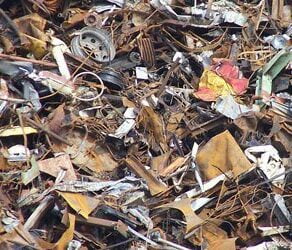
Just because most reptiles and insects are used to living outdoors doesn’t mean they want to live in filth. It’s important to clean your terrarium regularly. And, even more importantly, to do so using cleaning products that will not harm them.
First, a Health Warning
The first thing to remember if you are cleaning a reptile’s home is that he can carry salmonella and other bacteria. You must be very careful when handling lizards, frogs, turtles and snakes, as well as their belongings and terrariums. Everything must be thoroughly cleaned and sanitized on a regular basis. You may want to keep some hand sanitizer handy while you clean and/or wear rubber gloves.
*If you have an insect, such as a tarantula, you are in the clear on this one and can skip any steps involving sanitizing, but feel free to follow them anyway to get a good, thorough cleaning.
Assemble Your Materials
- Here’s what you’ll need to get your terrarium clean and sanitized:
- Paper towels or sponges
- Putty knife or razor blade
- Old toothbrush
- Bleach or terrarium cleaner
- Dish soap for hand washing (a mild formula; not dishwasher soap)
- Clean substrate(whatever material you use)
- Bucket or large bowl
- Sifter for substrate (optional)
Cleaning Instructions
1. Empty the terrarium
Remove your pet and place him in a safe container in another room; a box will work. Then take out all of his belongings, such as rocks, toys and food dishes. (Put the items in a bowl or on a paper towel to protect your counter and floor from bacteria).
You can remove the substrate also if you plan on replacing it at this time and throw it in the trash. Otherwise, sift through it to remove debris (you can purchase a sifter at the pet supply store).
2. Prepare the cleaning solution
Using a bowl or bucket, mix about a half gallon of hot water (not too hot! You don’t want to burn yourself) with a teaspoon of dish soap. Mix the water and soap together with a spoon or with your hands.
3. Scrub the terrarium
Dip a sponge or paper towel in the water and soap solution and wring it out until it is no longer dripping. Then wipe the terrarium out, bottom, top and sides. Remove any waste, food or other debris while you do this. If you need to, use the putty knife or razor blade to dislodge any stuck on gunk from the surface of the glass. Feel free to use the toothbrush for any seams or other tough to reach spots.
4. Rinse the terrarium
Once you’ve gotten every inch of the terrarium gunk-free, use a new sponge or paper towel to rinse it out. (If you want, you can instead take the container outside and rinse it with the hose.) Make sure to rinse it thoroughly in order to get rid of all traces of the soap, which might eventually make your pet sick. Wash your hands after this step.
5. Sanitize the terrarium
Once your terrarium is clean, you want to sanitize it to nix any remaining bacteria. Either use a commercial terrarium cleaner (ask at the pet supply store to find out which one is best for your pet) or a mixture of water and bleach. If you go the water and bleach route, use a cup of bleach for every gallon of water.
It is imperative to use a new sponge or paper towel this time or you’ll just be sticking the bacteria you washed off back in the terrarium. Not much point to that; total waste of time. Just scrub again, like you did before, making sure to coat every surface with the sanitizer.
6. Rinse the terrarium again
Basically, repeat step five. Be sure to get all of the sanitizer out of your terrarium before you even think about putting your pet back in. Now, wash your hands again.
7. Clean the food dishes and toys
The easiest way to clean your pet’s dishes is to just stick them in the dishwasher (make sure the heat cycle is turned on). You can do the same with the toys and accessories as well, as long as they are hardy enough to hold up during the heat cycle. If you need to clean an item that won’t do so well in the dishwasher, such as a rock or a branch or other wood item, clean it with a soap and water solution like the one you made in step three, and then dunk it in the bleach solution to sanitize. Rinse it well.
8. Dry the terrarium, accessories and toys
You can either let the terrarium and accessories air dry or dry them with a paper towel. Note that items made of wood will take longer to dry than the rest of the materials. (Don’t feel like waiting? Get rid of them and buy non-wood accessories.) When everything is completely dry, you can return it to the terrarium, after adding new substrate, if needed.
Your pet gets returned to the container last.
9. Clean your cleaning materials
Okay, so this may seem silly, but it is essential to prevent the spread of bacteria from your reptile. (Again, insect owners, you can skip this step.) Clean any sponges, brushes or buckets that you used to wash the terrarium following steps three through seven – or run them through the dishwasher. Then wash your hands one last time.
*If you used a sponge, let it dry before you put it away. You don’t want it stinking up your cabinets.
Now that your hands are clean, your terrarium is clean, and with any luck no one has contracted salmonella, you can finally sit down and bask in a job well done.
Keeping your terrarium clean
The easiest way to keep your pet’s home clean is to replace the food and water daily and remove any waste when you see it. Even so, you should still clean the tank at least once a week to keep your pet happy and healthy.









I was struggling to find out if bleach was safe for reptiles and how to use it on their cage. Thank you sooo much!
I prefer using vinegar then hydrogen peroxide for cleaning my cages. And baking soda for scrubbing. It works really well too, if anyone is looking for an alternative to bleach, and it isn’t as critical for every bit to be rinsed out.
I use it for all my critter’s cages, not just the reptiles. It’s super for getting rid of rodent smells. 🙂
Is it really necessary for me to clean my fat-tailed gecko’s terrarium every week? She eats live crickets.
Hmm, it looks too simple! Mine has a whitish deposit on the glass that even pure bleach did not alter! Mine is a plant terrarium and I would not think of removing and cleaning it every day. I thought when you have an animal in it, it’s called a vivarium….Maybe I’m wrong, but I can’t see any help for me here. Yep, toothbrush, paper, whatever, did not work for me.
Thanks for trying to help anyway.
For the white deposits you can use vinegar on a paper towel. If you can, put a wet (with vinegar) paper towel on the deposit. On my beer making equipment it sometimes takes a few days to get the glass clear again.
Mick, if you mist the terrarium, do you use distilled water or regular tap/filtered water? We have hard water where I’m at; eventually everything acquires white calcium deposits (coffee maker, my car, etc.). Distilled water will help, if not eliminate that issue.
See if you can find one of those dispensers that will put out 2 or 5 gallons of RO water (usually around groceries). It’s better than distilled, and cheaper.
Spiders are not insects. Spiders are classified as Arachnida. Insects are insecta. I thought everyone learned this is grade school.
I have a leopard gecko and I want to clean the glass in the terrarium but I don’t know what to use is vineger and water safe to use? Or is it best just to use water?
Donna,
This is the article you need: How to Clean and Disinfect Reptile Accessories.
Bleach is old school; very effective and will air out and dissipate well. A good rinsing and airing out is all that is needed; more care to be taken for your own exposure to bare skin really.